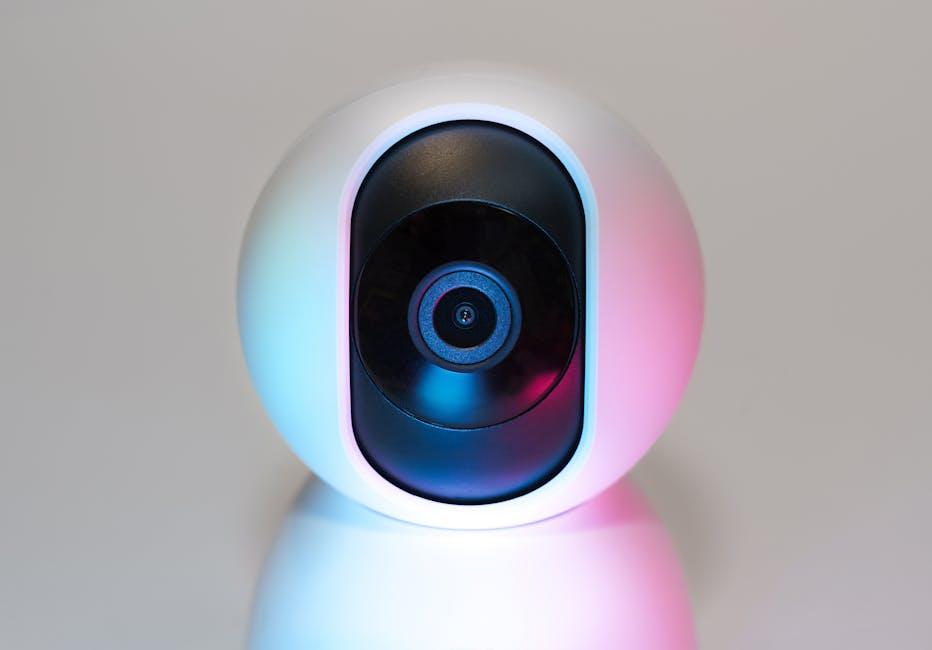In today’s digital age, the integration of technology into our daily lives has reached unprecedented levels, with smart TVs and streaming devices becoming household staples. These devices offer a seamless blend of entertainment and convenience, allowing users to access a plethora of content at the touch of a button. However, as these technologies become more ingrained in our personal spaces, concerns about privacy and data security have surfaced. This article explores the crucial question of whether smart TVs and streaming devices should incorporate more robust privacy controls. By examining current privacy measures, potential risks, and user expectations, we aim to provide a comprehensive understanding of the balance between technological advancement and personal privacy.
Understanding Current Privacy Measures in Smart TVs and Streaming Devices
In today’s interconnected world, the balance between convenience and privacy is crucial, especially when it comes to smart TVs and streaming devices. These devices often come equipped with microphones, cameras, and data-tracking capabilities, which can pose significant privacy risks. While manufacturers have introduced some privacy measures, such as allowing users to disable microphones and cameras, or providing basic data anonymization, these features may not be sufficient for those concerned about their personal data.
- Data Collection Transparency: Many devices offer some level of transparency by informing users about the types of data being collected. However, the language used is often technical and may not be easily understood by the average consumer.
- Opt-Out Options: Users can typically opt out of personalized advertising, but this does not necessarily stop data collection altogether. Instead, it may only limit the use of the data for targeted ads.
- Regular Software Updates: Manufacturers provide regular updates to address security vulnerabilities, but users must ensure their devices are updated to benefit from these protections.
Despite these measures, the debate continues on whether these privacy controls are robust enough or if more comprehensive options should be implemented. Enhanced user controls, clearer data policies, and more transparent privacy settings could empower consumers to make more informed decisions about their digital privacy.

Evaluating the Risks: How Data Collection Impacts User Privacy
In the age of smart technology, the delicate balance between innovation and privacy is under constant scrutiny. Smart TVs and streaming devices have revolutionized the way we consume media, yet they come with their own set of privacy challenges. These devices often collect vast amounts of data, from viewing habits to voice commands, which can be leveraged for personalized content delivery and advertising. However, this data collection raises concerns about user privacy, as it may be shared with third parties without explicit consent.
To evaluate the risks, consider the following potential impacts on user privacy:
- Data Misuse: Collected data could be exploited for targeted advertising or sold to external companies, leading to unwanted intrusions.
- Security Breaches: Without robust security measures, sensitive user data may be vulnerable to cyberattacks.
- Lack of Transparency: Users may be unaware of what data is being collected and how it is used, reducing their ability to make informed decisions.
Addressing these concerns necessitates enhanced privacy controls, empowering users with greater transparency and control over their personal information.
Implementing Enhanced Privacy Controls: Best Practices for Manufacturers
As the market for smart TVs and streaming devices continues to expand, manufacturers are under increasing pressure to integrate robust privacy controls into their products. Implementing enhanced privacy controls can not only safeguard user data but also build consumer trust. Here are some best practices manufacturers should consider:
- Data Minimization: Collect only the data necessary for device functionality and clearly communicate the purpose of data collection to users.
- User Control and Transparency: Offer intuitive settings that allow users to easily manage their privacy preferences. Clearly display what data is being collected and how it is being used.
- Regular Software Updates: Ensure that devices receive timely updates to patch vulnerabilities and improve security features, keeping user data protected against emerging threats.
- Secure Data Transmission: Use encryption protocols to secure data transmission between devices and servers, preventing unauthorized access to sensitive information.
- Third-Party Integrations: Vet third-party applications and services for compliance with privacy standards and ensure they do not compromise user data.
By adopting these best practices, manufacturers can not only comply with regulatory requirements but also foster a more secure and trustworthy environment for their users, enhancing the overall user experience and loyalty.

Empowering Consumers: Recommendations for Improved Privacy Settings
In the evolving landscape of smart TVs and streaming devices, empowering consumers with robust privacy controls is not just a preference but a necessity. Manufacturers should prioritize transparency by offering detailed privacy policies that are easy to access and understand. This would help consumers make informed decisions about their data. Furthermore, integrating a user-friendly privacy dashboard can significantly enhance the user experience. This dashboard should allow users to:
- Easily manage data collection preferences for apps and services.
- Opt-in or opt-out of personalized advertising with clear implications of each choice.
- Review and delete stored data periodically, ensuring they maintain control over their information.
Additionally, implementing default settings that prioritize privacy can be a game-changer. By setting the default to the most private option, consumers are protected from the outset, and those who wish to share more can adjust their settings accordingly. These changes would not only foster trust but also align with growing consumer expectations for privacy-first technology.
Future Outlook
the question of whether smart TVs and streaming devices should include more privacy controls is both timely and significant. As these technologies become more integrated into our daily lives, the potential for data misuse and privacy breaches increases. While manufacturers and service providers have made strides in enhancing privacy features, there remains a pressing need for more robust and transparent controls. Consumers should be empowered with clear information and options to manage their data effectively. As the landscape of digital entertainment continues to evolve, so too must our approach to privacy, ensuring that it is prioritized alongside innovation and user experience. By advocating for enhanced privacy measures and staying informed, users can play a critical role in shaping the future of smart technology.







































